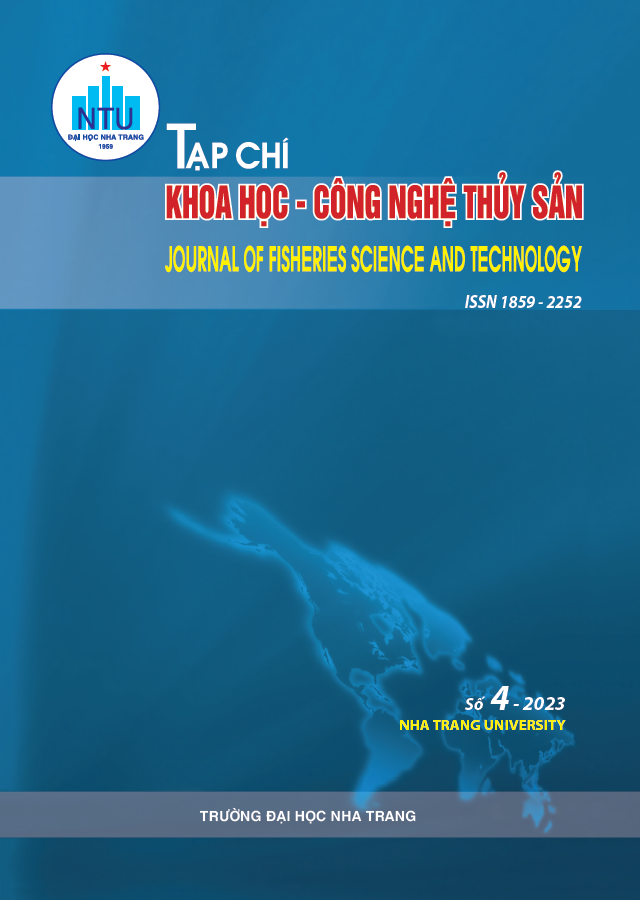##plugins.themes.huaf_theme.article.main##
Abstract
Selection of suitable floc-forming biological products for whiteleg shrimp farming aims to achieve the optimal efficiency of feed utilization, improve environmental quality, and still achieve high shrimp productivity. Four types of products (NT1, NT2, NT3, and NT4) were used to culture whiteleg shrimp and evaluated the following parameters: Vibrio spp. and Bacillus spp. bacteria in the culture environment, floc particle density; survival rate (%), weight (g), and feed conversion ratio (FCR) of shrimp after 1 month of culture. The results of the study after 4 weeks of culture showed that the highest densities of Vibrio spp. and Bacillus spp. were found in the NT1 treatment (p< 0.05), while the NT4 treatment showed the lowest Vibrio spp. density (p < 0.05). The density of Bacillus spp. in the NT2, NT3, and NT4 treatments did not differ after 4 weeks of culture (p > 0.05). The results of the floc density test showed that the highest density was found in the NT1 treatment (p < 0.05) and was not detected in the NT4 treatment. The feed conversion ratio (FCR) and survival rate of shrimp in the treatments did not differ statistically. The shrimp weight was lowest in NT2. The results of the study showed that the NT1 floc-forming biological product is the most effective product among the products used in whiteleg shrimp farming.
Keywords: Floc, biological products, white leg shrimp.

